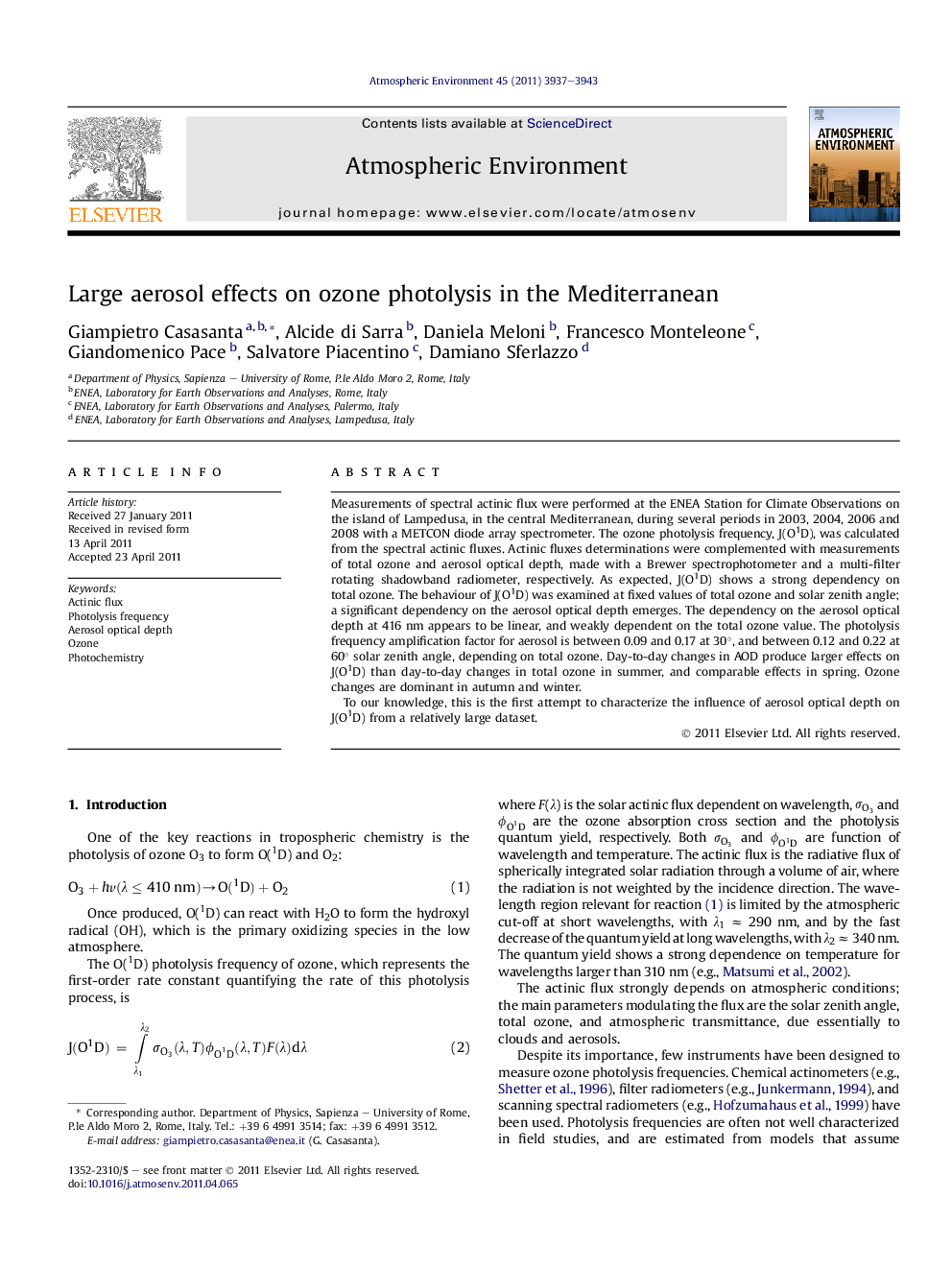| Article ID | Journal | Published Year | Pages | File Type |
|---|---|---|---|---|
| 4439812 | Atmospheric Environment | 2011 | 7 Pages |
Measurements of spectral actinic flux were performed at the ENEA Station for Climate Observations on the island of Lampedusa, in the central Mediterranean, during several periods in 2003, 2004, 2006 and 2008 with a METCON diode array spectrometer. The ozone photolysis frequency, J(O1D), was calculated from the spectral actinic fluxes. Actinic fluxes determinations were complemented with measurements of total ozone and aerosol optical depth, made with a Brewer spectrophotometer and a multi-filter rotating shadowband radiometer, respectively. As expected, J(O1D) shows a strong dependency on total ozone. The behaviour of J(O1D) was examined at fixed values of total ozone and solar zenith angle; a significant dependency on the aerosol optical depth emerges. The dependency on the aerosol optical depth at 416 nm appears to be linear, and weakly dependent on the total ozone value. The photolysis frequency amplification factor for aerosol is between 0.09 and 0.17 at 30°, and between 0.12 and 0.22 at 60° solar zenith angle, depending on total ozone. Day-to-day changes in AOD produce larger effects on J(O1D) than day-to-day changes in total ozone in summer, and comparable effects in spring. Ozone changes are dominant in autumn and winter.To our knowledge, this is the first attempt to characterize the influence of aerosol optical depth on J(O1D) from a relatively large dataset.
► Measurements of J(O1D), total ozone and aerosol optical depth in the Mediterranean. ► Dependency of J(O1D) on ozone and aerosols at different solar zenith angles. ► Aerosol variability influences J(O1D) more than ozone variability in summer.
